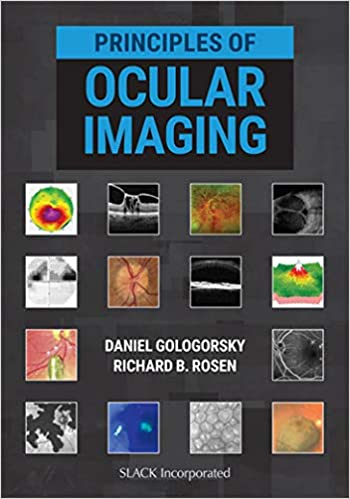Розовый глаз, или конъюнктивит, при заболевании глаз, которое проявляется покраснением, слезотечением, зудом или выделением пораженного глаза. Это может быть очень заразным. На самом деле, будучи студентом в Корнелле, я вспоминаю эпидемию розового глаза, которая привлекла внимание средств массовой информации. Распространение этой болезни в конечном итоге было прослежено в основной библиотеке старшекурсников, а точнее, в наборе общедоступных компьютеров, связанных с обычными принтерами.
Вэтой статье я буду
- Объясните, что такое конъюнктивит,
- показать, как различать разные виды конъюнктивита,
- Опишите несколько стандартных вариантов лечения, и
- Перечислите некоторые профилактические меры, которые вы можете предпринять, чтобы остановить его распространение.
Что такое конъюнктивит?
Конъюнктива представляет собой тонкую полупрозрачную пленку, покрывающую переднюю поверхность глазного яблока (она покрывает «белки глаз»). Это физический барьер, защищающий глаза от внешних возбудителей. Как и большинство барьерных тканей, конъюнктива может быть заражена или воспалена, что приводит к конъюнктивиту.
Типы конъюнктивита
Существует много видов конъюнктивита, но для ясности я разделю их на две категории: инфекционные и аллергические. Инфекционный конъюнктивит может быть вызван вирусом или бактериями. Большую часть времени (~ 70-90% времени) инфекционный конъюнктивит вызывается вирусом.
Определение типа конъюнктивита

Признаки вирусного конъюнктивита
Вирусный конъюнктивит часто вызывается тем же аденовирусом, который вызывает инфекцию верхних дыхательных путей, поэтому сопутствующая или недавняя простуда не редкость. Вирусный конъюнктивит очень заразен - характерным признаком вирусного конъюнктивита является распространение инфекции от одного глаза к другому или другим членам того же домашнего хозяйства или рабочей среды.
Признаки бактериального конъюнктивита
В то время как трудно отличить вирусный от бактериального конъюнктивита, последний имеет более выраженные слизисто-гнойные выделения по сравнению с первым.
Признаки аллергического конъюнктивита
Аллергический конъюнктивит, как правило, влияет на людей с аллергией (пыльца, пыль) и является более сезонно выраженным. Часто этот конъюнктивит связан с насморком, весной и аллергическими блесками на лице.
Лечение конъюнктивита
Лечение конъюнктивита зависит от его первопричины.
- Вирусный конъюнктивит улучшается только со временем (антибиотик не работает).
- Исключение: в редком случае, когда конъюнктивит вызван вирусом простого герпеса, ваш офтальмолог может назначить противовирусные препараты.
- Бактериальный конъюнктивит резко улучшается с помощью антибиотиков.
- Аллергический конъюнктивит улучшается за счет физического устранения аллергена и применения антигистаминных капель.
Примечание: существуют другие методы лечения конъюнктивита, в том числе легкие стероиды и офтальмологический бетадин, но такие методы лечения более нюансированы и выходят за рамки данной статьи.
Во всех случаях конъюнктивита поддерживающий уход с обильными искусственными слезами и прохладными компрессами может улучшить самочувствие пациента с точки зрения комфорта. В большинстве случаев симптомы конъюнктивита проходят самостоятельно в течение недели.
Профилактические меры
Имейте в виду, что вирусный конъюнктивит очень заразен, поэтому следует соблюдать осторожность, чтобы ограничить физический контакт с пораженным глазом и другими людьми в социальной обстановке. Убедитесь, что:
- Не прикасайтесь к глазам и часто мойте руки.
- Часто меняйте полотенца, мочалки и постельное белье.
- Замените любую косметику для глаз, которую вы использовали, и не делитесь ею с другими.
- Избегайте бассейнов.
Примечание: конъюнктивит легко распространяется через загрязненную воду, поэтому избегайте водяных условий, таких как бассейны, гидромассажные ванны, аквапарки и озера. Кроме того, хлор и другие химические вещества в очищенной воде могут усугубить раздражение глаз.
Полный список мер предосторожности можно найти здесь: Профилактика конъюнктивита CDC{: target="_blank"}.
Смотрите специалиста
Эта статья предназначена только для образовательных целей и не должна использоваться вместо профессиональной медицинской консультации.
Даже среди врачей лучше обратиться к офтальмологу по поводу розового глаза. Специалисты по зрению могут лучше различать множество состояний, которые могут проявляться покраснением, и соответствующим образом лечить основное состояние. В то время как глазные капли Visine или антибиотики обычно назначают неспециалисты, такое лечение может не подходить для распространенного вирусного конъюнктивита. Действительно, исследование в журнале Офтальмология установлено, что:
«По сравнению с людьми, которых видел офтальмолог, те, кто видел педиатров, семейных врачей, терапевтов и врачей скорой помощи, имели в два-три раза больше шансов получить антибиотики».
Поэтому в следующий раз, когда вы или ваш друг почувствуете розовый глаз, обязательно обратитесь к офтальмологу.

